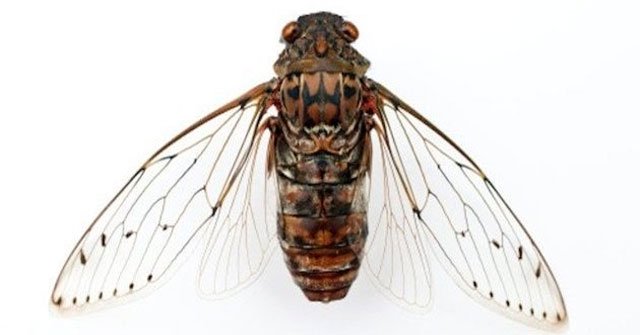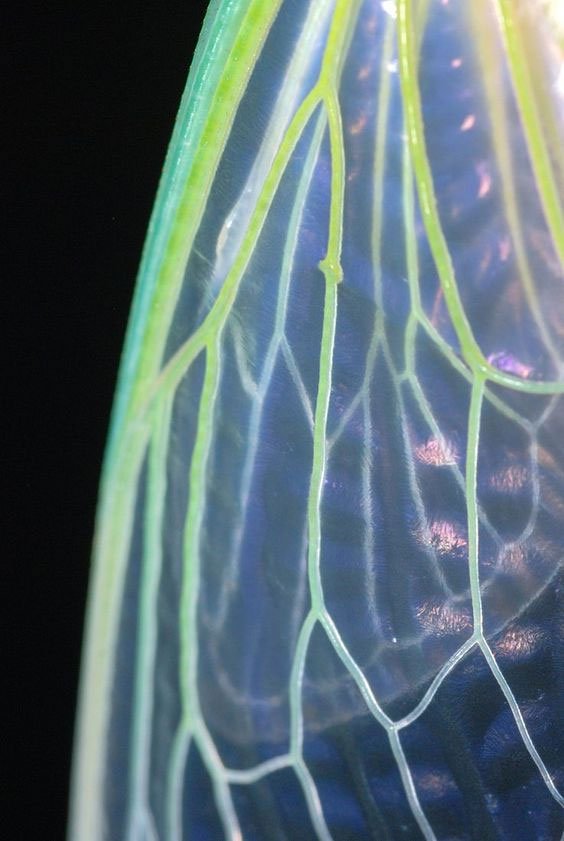Why are cicada's fragile wings a nightmare for all bacteria?
" Where melancholy is as thin as a cicada. Your smile is like a wheel ", cicadas not only inspired Black Vau to write the Girl next door , it also inspired scientists when they think of a surface with superior water and antibacterial properties.
Imagine the car glasses that never fade in fog, the glasses that never get water when it rains, the surfaces in the hospital - where bacteria just drop on it. ripped and killed.
About a decade ago, the more closely they observed the noisy insects under a microscope, the more scientists discovered many amazing mysteries on their wings.

Mites have extremely thin wings.
How thin is the wing wing?
When you see through the wings of a tick, it's essentially an ultra-thin and transparent cuticle. The " ribbed " lines that you see are actually not ribbed, they are a network of blood vessels, connected to the ventilation ducts and also to nerve fibers.
At the points with the largest blood vessel cross-section, the maximum thickness of the new wing is about 0.7 mm. But in areas with smaller vascular cross-sectional areas, the thickness of the wing can be as low as 0.07 mm, or 70 micrometres - meaning smaller than the diameter of a human hair.

The thickness of the wing can be as low as 0.07 mm, or 70 micrometers.
On the surface of the mites, scientists found a natural nano coating called " nanopillars ". They are essentially fatty acid molecular columns with a height of only about 400 nm and arranged close together.
When exposed to dust, pollen and water, the nano fatty acid layer of cicadas helps them repel material to self-clean. The water that falls on the surface of the cicada's wings will slip away without them needing to shake. This effect is similar to what happens on the surface of a lotus leaf, helping cicadas in nature almost never have to shelter from rain.

This effect is similar to what happens on the surface of a lotus leaf, preventing mites from taking shelter in the rain.
A natural anti-bacterial material
But not only is it resistant to water, the nanoparticles on the wings also taper to the top with a bottom diameter of about 150 nm and a head diameter of about 80 nm. In the world of bacteria, cicada wings are a nightmare table if they are accidentally on it.
Scientists began to suspect this, when they saw that the cicadas' wings died more slowly than other parts of the body. To find out why, they dripped onto the surface of different winged strains of bacteria and found that some strains died within minutes.

The wings of dead cicadas dissolve more slowly than other parts of the body.
Scanning this process under a microscope, the scientists found that the bacteria with elastic membranes had sunk into the nanoscale layer, cicada wings punctured the bacterial membrane with fatty acid columns on the surface of the it.
In addition, with the stubborn bacteria still sticking on the surface of the wings without being penetrated, their membranes are gradually under pressure on the tip of the destroying nano columns. Or when they try to move on the cicadas, the membrane can get caught in the pointed tips and the bacteria will now be ripped apart.

Application
The scientists said that mimicking the natural antibacterial effect of mites will help them create biosafety surfaces that can be applied to health, agriculture and life.
Suppose, an antimicrobial layer that mimics the nanoparticles on a wing can be covered on susceptible surfaces such as hospital beds, doorknobs, and stair railings to limit cross-contamination in hospitals. This coating can also be used for medical devices such as scalpels.
The scientists can also create a filter or water pipe containing tiny nanoparticles such as the wings. On the one hand, its hydrophobic property allows water to flow through the tube faster, and on the other hand, micro nano spikes can kill bacteria and pasteurize water.
- The cicadas are red and red,
- Cicada-style bactericidal
- Billions of cicadas will
- Millions of cicadas are about to rise after 17 years underground
- The first sycamore was first recorded in Vietnam
- The 17-year-old underground animal is a specialty in Vietnam
- New cicada species in the Central Highlands
- US CDC warns: Bacteria
- Hello! I am a cicada and you are scolding me wrong!
- Fragile like butterfly wings, what will their fate be when the rain comes?
- Delicious delicacies from cicadas
- Cicadas regulate the number of birds
 Why do potatoes have eyes?
Why do potatoes have eyes? 'Tragedy' the world's largest carnivorous life: Death becomes ... public toilet
'Tragedy' the world's largest carnivorous life: Death becomes ... public toilet Tomatoes were once considered 'poisonous' for 200 years
Tomatoes were once considered 'poisonous' for 200 years Detecting microscopic parasites on human face
Detecting microscopic parasites on human face